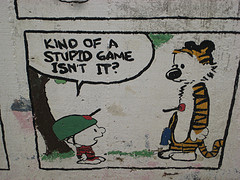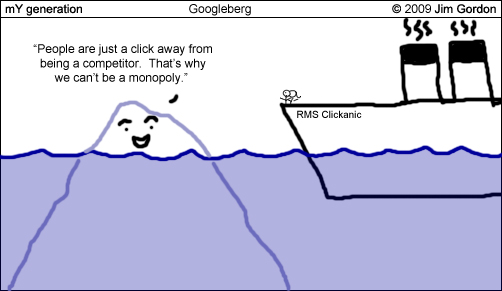|
|
|
Thursday, November 2nd, 2017

Winning and competition are fundamental to our lives.
It starts early with your siblings fighting over the same toy and progresses to fighting with your spouse over the TV remote.
It is also something that enables us to push past what our preconceived limits are. I am sure you have had a time when you thought you could do no more, but then you see someone else succeeding a bit more and you push on.
The competition was what helped you achieve your goals and at the end of the day, everyone is better for it.
I have been watching the World Series, full disclaimer I am not a baseball guy, but I do love to see a winner. I happened to be in Houston for the start of the series and that determined the team I would root for, so for the past week or so I have been an Astros fan.
As I watched the series I started to get invested in the lives of the players and what had enabled them to get to this grandest of stages. It was interesting to learn about their paths to the big league and what challenges they faced.
I learned an interesting fact from my wife this morning. Her high school friend is a relief pitcher for the Houston Astros by the name of Tony Sipp. I looked up his stats and as far as I can tell he didn’t pitch a single ball, but he will get a ring.
What I found to be interesting about his life, though, was the path he took to get to where he is. He is from Pascagoula, MS, where he also played for the football team that took home the state championship in 2000, so the guy was a talented athlete that had been around success. He then went on to play at the local Junior College before transferring to Clemson. From there it was a series of double and triple ball teams before entering the majors many years later.
As I read a bit about this guy, I am realizing that he is a winner. He isn’t the big time flashy name that you hear every day, he is the grind-it-out-and-pushes-on kind of guy. He has continued to push his way to the top of his talent and been able to surround himself with others who are doing the same thing.
I am pretty sure we can do the same thing in business.
Let’s face it, we are not all going to be the next Elon Musk or Jeff Bezos.
But there seems to be plenty of room for us all to push a bit harder each day and surround ourselves with winners.
It is up to us to make that happen.
Image credit: Wikipedia
Posted in Personal Growth, Ryan's Journal | No Comments »
Monday, January 25th, 2016
It’s amazing to me, but looking back over nearly a decade of writing I find posts that still impress, with information that is as useful now as when it was written. Golden Oldies is a collection of what I consider some of the best posts during that time. Read other Golden Oldies here

I’m no happier about the AIG and other bonuses paid to screwed up Wall Street banks, but I’m not sure why any of us are surprised.
“In the largest 25 corporate bankruptcies between 1999 and 2002, while hundreds of billions of dollars of investor wealth and over 100,000 jobs disappeared, the Financial Times found the “barons of bankruptcy” made off with $3.3 billion.”
Giant compensation packages, guaranteed bonuses and platinum parachutes are excused by Boards and executives as necessary to attract the “best and brightest,” but here’s what’s really going on.
The ‘name’ demands outsize compensation/stock options/guaranteed bonus/etc. in order to validate their ‘brand’.
Those responsible for hiring not only meet the demands, but even exceed them in an effort to attain or sustain the company’s reputation as a better home for ‘stars’—the more stars you have the greater the bragging rights— mine’s bigger than yours in high school locker room talk.
Now let’s consider the folly of this attitude.
Those hiring often seek a name brand in the mistaken belief that the brand comes with a warranty that guarantees good results.
But no matter who you hire you’re actually paying for their past performance, which is always influenced by
- circumstances—boss and company positioning in its market and industry
- environment—culture and colleagues;
and let us not forget that minor factor
The hiring mindset is that everything the brand accomplished was done in a total vacuum and dependent only on the brand’s own actions, therefore changing every single surrounding factor will have no impact on performance.
Put like that it sounds pretty stupid, doesn’t it.
This is one of the prime reasons that so many CEOs bring their ‘own team’ over when they move, as do managers all the way down the food chain—they know they didn’t do it alone.
CEOs aren’t like movie and rock stars whose very names draw consumers into spending money—nobody ever bought a product from GE because Jack Welch was CEO, nor do they carry Jobs’ iPods—so why pay them that way?
Moreover, assuming that performance occurring during an expansion is a valid yardstick for performance in general, let alone a downturn, is sheer idiocy.
You have only to remember the difficulties faced by people whose management skills were honed between 1991 and 2000, the longest expansion in our history. When the recession hit in March of 2001 they had no experience whatsoever of how to drive revenue or manage in a down economy.
That recession and the previous one in 1990 lasted only 8 months each. The longest recession we’ve had was 2 years, January-July 1980 and July 1981-November 1982, and that one had a 12 month break in it. This means there are a very small number of managers with any actual experience managing in anything even close to what’s happening now.
The current recession officially started in December 2007, so it’s already 15 months old and the end isn’t in sight.
What experience makes these folks the ‘best and brightest’ for today’s world?
Just what the hell are companies still guaranteeing oversized compensation and exorbitant exit packages when now is definitely the time to pay for future performance—no guarantees.
Sad, isn’t it. Seven years and nothing’s changed, in fact, it’s gotten much worse.
The wealth of the richest 62 people grew by more than half a trillion dollars in that last half-decade, while the wealth of the poorest 50 percent of people globally decreased by more than $1 trillion during the same period.
Image credit: flickr
Posted in Compensation, Golden Oldies, Hiring | No Comments »
Monday, January 19th, 2015

Who do you channel? Sun Tzu or Lao Tzo?
I’ve cited Lao Tzu multiple times over the years, but, unlike most management gurus, not Sun Tzu’s Art of War.
I never liked battle analogies; never understood the idea of “killing the competition.” In spite of what I was told was my naiveté, it seemed to me that loving the customer was more important.
While those battle terms are still around, it seems like I was on to something way back then.
According to Frank Cespedes, Senior Lecturer at Harvard Business School and author of Aligning Strategy and Sales those fighting words get the focus wrong.
Strategy gurus constantly use analogies with battle plans for “competitive advantage” versus the enemy. But the metaphor is not suitable because business, unlike a war or battle, is not primarily about defeating an enemy. Business is primarily about customer value: targeting customer groups and tailoring products, sales and other activities to serve those groups better or differently than others. (…) Peter Drucker emphasized, “The purpose of a business is to create a customer.” That’s also the purpose of any business strategy: make customers, not war.
Winning customers is actually pretty simple, delight them, amaze them and provide them with something they either need or want.
Do all that and the competition will fade away in the eyes of your customers.
And theirs are the only eyes that matter.
Image credit: Kevin Wong
Posted in Communication | No Comments »
Friday, August 29th, 2014
A Friday series exploring Startups and the people who make them go. Read all If the Shoe Fits posts here
 Cisco CEO John Chambers constantly amazes me. Cisco CEO John Chambers constantly amazes me.
It’s not his 19 years of reinventing Cisco and keeping it on top, but for other stuff, such as Cisco’s disaster-focused Tactical Operations team.
They just did another very neat thing.
Read the article for the full story, but here’s the short version.
Connectify is a successful startup.
It makes a networking product called Connectify Hotspot that lets you turn any Windows computer into a Wi-Fi hotspot to share your internet connection. It’s been downloaded 65 million times and used for over 500 million hotspots.
Cisco is the world’s largest maker of hotspot equipment.
Connectify had been trying to buy the connectify.com domain since its founding (long story; read article).
Turned out that Cisco had acquired the domain as part of a long ago deal.
When the story came to light Cisco’s reaction was swift.
It immediately turned the domain over to Connectify at no cost.
Connectify publicly expressed its thanks.
Connectify’s CEO Alex Gizis was so thrilled that he wrote a public thank you post to Cisco and called Cisco the “hero” of the story. He then offered a free year of its hotspot service to all of Cisco’s 75,000 employees.
Here’s the question.
Under similar circumstances—hot startup/competing technology—how many of the CEOs at Google, Oracle, Facebook, Apple, Twitter, GE, 3M, HP, VMware, etc. would do the same thing?
What would you do?
Image credit: HikingArtist
Posted in If the Shoe Fits, Leadership | No Comments »
Wednesday, January 15th, 2014

Last month we looked at the economic dichotomy of having a consumer-based economy while simultaneously reducing wages.
Henry Ford understood that paying higher wages was good business.
Ford astonished the world in 1914 by offering a $5 per day wage ($110 today), which more than doubled the rate of most of his workers. (…) The move proved extremely profitable; instead of constant turnover of employees, the best mechanics in Detroit flocked to Ford, bringing their human capital and expertise, raising productivity, and lowering training costs.
Not to mention that a good part of that disposable income was used to buy Ford cars.
Business counters that idea by pointing to all the costs that didn’t exist in 1914 as justification for relentlessly cutting wages and benefits.
But nothing justifies the current minimum wage in many states.
Speaking of a hundred years, it took that long for new research by Zeynep Ton, a business professor at M.I.T.’s Sloan School of Management and author of “The Good Jobs Strategy,” to prove Ford was correct.
For every dollar of increased wages, one retailer that was studied by Fisher brought in $10 more in revenue. For more-understaffed stores in the study, the boost was as high as $28.
Not only doe it affect employees, but apparently higher wages has a halo effect on stock.
Costco pays its workers about $21 an hour; Walmart is just about $13. Yet Costco’s stock performance has thoroughly walloped Walmart’s for a decade.
Ton’s work is of major competitive importance whether you’re a boss in a small business or head up a giant enterprise.
Flickr image credit: ping.fm
Posted in Compensation, Motivation | 1 Comment »
Tuesday, January 14th, 2014

Twice a week Adam Bryant interviews CEOs from a myriad of companies, large and small, across the industry spectrum, for his Corner Office feature in The New York Times.
As with anyone who spends time talking with CEOs about staying competitive the constant theme he’s found boils down to one word—culture.
Now Bryant has distilled the knowledge and insights gathered from hundreds of interviews into a new book, “Quick and Nimble: Lessons From Leading C.E.O.’s on How to Create a Culture of Innovation”
The six key tenets identified should come as no surprise,
- A Simple Plan
- Rules of the Road (corporate values)
- A Little Respect (embedded in the culture)
- It’s About the Team (performance and accountability, trustworthiness and dependability)
- Adult Conversations (frank discussions to work through disagreements and misunderstandings)
- The Hazards of Email (ease of misunderstanding)
Not new and certainly not rocket science, but worth reading (at the very least read the article).
Good information to help you improve nimbleness and innovation in your own organization.
And a great gift if you happen to work for bosses who don’t see the point.
Flickr image credit: Joanna Lee Osborn
Posted in Culture, Ducks In A Row, Innovation | No Comments »
Wednesday, November 14th, 2012
 Want a guaranteed way to screw-up your company? Want a guaranteed way to screw-up your company?
Guaranteed to work no matter well managed the company has always been?
If so, just follow these three steps:
1. Give three ambitious humans equal status to compete for the top prize of becoming CEO.
Two years ago Time Warner Inc. Chief Executive Jeff Bewkes created an Office of the President to inspire three ambitious executives into collegial competition for the top job at Warner Bros., Hollywood’s largest film and television studio.
2. Turn a blind eye to any problems that arise.
And although Bewkes said anyone jockeying or politicking for the job of Warner Bros.’ chairman would “eliminate themselves” as contenders, the three men have been maneuvering for position while their subordinates quietly advertise their bosses’ qualities and rivals’ shortcomings.
3. Ignore the fallout from the competition that you instigated.
Morale is low and anxiety is high on Warner’s Burbank lot. Some insiders describe an atmosphere in which executives are hesitant to extend contracts, staffers are afraid to cross department lines for fear of “taking sides” and potential partners are wary of signing long-term deals without knowing who will be in charge.
Actions like this make you wonder what Bewkes was/is thinking or what he’s using, since it’s obviously not his brain.
You don’t have to be running a multi-billion dollar company to learn from this; in fact, the lesson here is for everybody, whether boss or individual, and it’s a simple one with no exceptions.
Never put into action any plan that ignores the most basic traits of human nature.
Flickr image credit: Steven Depolo
Posted in Culture, Motivation | No Comments »
Monday, August 29th, 2011

I read an interesting article from a Forbes advisor called A Young World is No Place for Old Corporations; in a nutshell it talks about nostalgia for “what the WSJ calls America’s ‘Midcentury Moment’, those post war “golden years of the 1940’s, ‘50s and early ‘60s?” The boom years when Americans forged the world’s new super power, as those in Europe diminished.“
It goes on to say, “During this time US companies became dominant corporations on a world stage, strongly influencing how business was conducted all over the world.
Fast forward to 2011, America now competes in a fierce global market against young and dynamic economies.”
It lauds the dynamic spark that drove the US economy; a common theme, but one I get tired of seeing.
Tired because it only tells only the upside of the story and ignores so much.
I am neither an economist nor an historian, but here is my view of the same history.
- European industry didn’t diminish, it was crippled by WWII.
- The US became dominant because we were the only country in a position to produce as opposed to spending our efforts and money to rebuild.
In other words, in comparison to the material and psychological devastation experienced by the rest of the world what the US suffered was more like a serious inconvenience.
But not too inconvenient, since we kept on producing and selling.
War’s end left us in the cat-bird seat—not rebuilding, just retooling to sell what the rest of the world needed to rebuild.
A lack of competition breeds arrogance, sloppy practices and fat—fat management and fat labor; it is easy to succeed in a world with little-to-no competition.
When countries no longer needed us because they produced their own we were surprised; when they went beyond and more efficiently produced what we produced and innovated where we had not bothered we were shocked.
When comfortable, we humans seem to believe that some version of what is will always be; it isn’t that we don’t believe in change, but we seem blind to radical change.
We are taken by surprise when it happens and long instead for whatever version of the “good old days” brings us back to our (false) comfort zone.
Flickr image credit: Bruce Turner
Posted in Business info, Change, Innovation | No Comments »
Sunday, July 19th, 2009
See all mY generation posts here.

Posted in Marketing, mY generation, Strategy | No Comments »
|
 Subscribe to
Subscribe to
MAPping Company Success
About Miki 
Clarify your exec summary, website, etc.
Have a quick question or just want to chat? Feel free to write or call me at 360.335.8054
The 12 Ingredients of a Fillable Req
CheatSheet for InterviewERS
CheatSheet for InterviewEEs™
Give your mind a rest. Here are 4 quick ways to get rid of kinks, break a logjam or juice your creativity!
Creative mousing
Bubblewrap!
Animal innovation
Brain teaser
The latest disaster is here at home; donate to the East Coast recovery efforts now!
Text REDCROSS to 90999 to make a $10 donation or call 00.733.2767. $10 really really does make a difference and you'll never miss it.
And always donate what you can whenever you can
The following accept cash and in-kind donations: Doctors Without Borders, UNICEF, Red Cross, World Food Program, Save the Children
*/
?>About Miki
About KG
Clarify your exec summary, website, marketing collateral, etc.
Have a question or just want to chat @ no cost? Feel free to write
Download useful assistance now.
Entrepreneurs face difficulties that are hard for most people to imagine, let alone understand. You can find anonymous help and connections that do understand at 7 cups of tea.
Crises never end.
$10 really does make a difference and you’ll never miss it,
while $10 a month has exponential power.
Always donate what you can whenever you can.
The following accept cash and in-kind donations:
|







 Cisco CEO John Chambers constantly amazes me.
Cisco CEO John Chambers constantly amazes me.

 Want a guaranteed way to screw-up your company?
Want a guaranteed way to screw-up your company?


